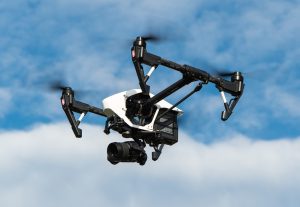 With more than 250 reports of drone sightings a month, the U.S. Federal Aviation Administration (FAA) is taking emergency action to regulate the use of unmanned aerial vehicles (UAVs) in restricted areas.
With more than 250 reports of drone sightings a month, the U.S. Federal Aviation Administration (FAA) is taking emergency action to regulate the use of unmanned aerial vehicles (UAVs) in restricted areas.
As explained by Independent, drones post a very real risk to passengers aboard commercial flights. If a drone strikes an aircraft’s wing, it would likely cause minimal damage while allowing the plane to continue its path. If a drone strikes the engine, however, it could cause the engine to explode and possibly force the plane to make an emergency landing. So, just how much of a threat do drones pose to airlines?
According to a report by Airprox Board , there were five “dangerous encounters” between drones and airplanes in 2014. In 2015, this number jumped to 29. It’s safe to assume there have been even more dangerous encounters between drones and airplanes in the years since, as more and more people take their drones to the skies.
The good news is that airplanes are generally safe from drones — as well as bird strikes — when flying at a normal cruising altitude. The risk begins to manifest, however, at lower altitudes, which occur during takeoff and landing. And with drone sightings jumping to roughly 250 a month, the FAA is taking emergency action to create clarified regulations.
Of course, the FAA currently restricts users from flying drones in certain areas. In order to fly a drone in one of these restricted areas, the user must obtain permission from the FAA. Unfortunately, though, not every drone pilot is complying with this otherwise simple requirement. The FAA says the demand for these special permits has increased to the point where it can no longer keep up. As a result, the back log of approvals is causing drone pilots to operate their drones in restricted areas without approval.
“The time necessary to process these requests has resulted in an increase in safety reports due to non-compliant operations,” the FAA said in a notice. The FAA also went on to say that reports of drones operating in restricted areas creates distractions for air traffic control management.
The FAA’s notice comes just a few days after a drone had collided with an aircraft. On September 21, a UH-60 Blackhawk helicopter struck a drone near Staten Island. There were no injuries attributed to the incident, though it still signaled a newfound interest regarding the use of drones in restricted areas, especially areas in which aircraft operate.



